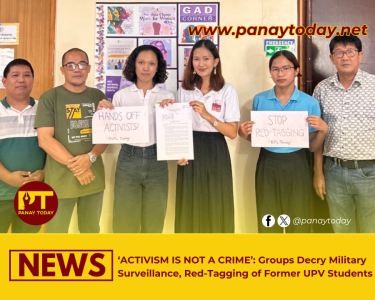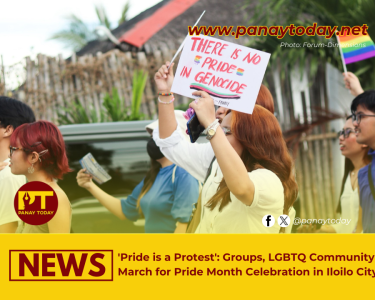ILOILO City – The burial grounds and sacred sites of the Tumandok indigenous peoples of Central Panay will be desecrated by the construction of the Jalaur mega dam, according to a research conducted by University of the Philippines Visayas graduates Mar Anthony Balani and Jude Mangilog.
“We will be really affected because you know if burial grounds will be destroyed of our relatives, our culture will be affected. The continuity and tradition of our family will be destroyed because our burial grounds are remembrance of our respect to our dead family relatives and ancestors,” one of the Tumandok key informants said in Kinaray-a.
RESEARCH STUDY
The study, entitled “Necropolitics: Panay’s Tumandok Burial Grounds and the Jalaur Multipurpose Project Phase II (JRMP II)”, identified 5 Tumandok burial grounds and 1 sacred site in Calinog, Iloilo that will be destroyed to facilitate the construction of the Jalaur mega dam and access roads. A total of 9 Tumandok communities will be totally submerged to make way for the mega dam.
Balani and Mangilog’s study, which the two fulfilled last May 2016 as their undergraduate political science thesis requirement at the UPV Department of Social Sciences under the advisorship of Prof. Tomasito Talledo, was presented during the International Solidarity Mission to Panay (ISM-Panay) held last weekend, July 16-18, 2016 in Calinog, Iloilo and Tapaz, Capiz.
BURIAL GROUNDS AND SACRED SITES
The burial grounds that will be submerged once the dam is finished include those in Sitio Sakalon in the boundary of Agcalaga and Alibunan, Sitio Balikan in Garangan, the concrete public cemetery in Garangan, and the “Bukay Isda” sacred site in the Jalaur river itself in Agcalaga. The burial grounds in Sitio Kabuyan in Masaroy as well as the public cemetery in Masaroy will meanwhile be destroyed by road construction.
Citing Tumandok accounts, it is estimated that each burial ground where the Tumandok bury their dead may have at least 30-50 to more than 100 buried people. The burial ground are marked by the planting of bamboo and gumamela while the “Bukay Isda” is a whitish fish shaped stone in the center of the Jalaur where they perform their rituals.
“We respect our dead. Our dead will condemn us that we agree that they will be desecrated. How painful it is to know that they’re dead already but they will be drowned by water. It is very painful for us Tumandok because our dead is not respected,” said another key informant in Kinaray-a.
The study concludes that the project is an example of “development aggression” against the Tumandok, with the destruction of burial grounds committed by government agencies violating existing international laws, agreements, and jurisprudence particularly the United Nations Declaration on the Rights of Indigenous Peoples, International Labor Organization Convention No. 107 in 1957, and International Labor Organization Convention No. 169 in 1991.
INTERNATIONAL CASES
The study cited the case of the Awas Tingni indigenous peoples who won a case in the Inter-American Court on Human Rights (IACHR) in 1998 against Nicaragua, which was sued for granting the Korean company Sol de Caribe S.A. a permit for the exploitation of 62,000 hectares of tropical forests falling within the ancestral domain of the Awas Tingni.
Another is the 1994 Hopu and Bessert indigenous peoples’ case in the Human Rights Committee of the International Covenant on Civil and Political Rights ICCPR) against France which planned to build a luxury hotel complex in the former’s ancestral grounds.
Balani and Mangilog conducted interviews with Tumandok elders as key informants, personnel of offices in-charge of the construction of JRMP-II, identified and mapped of burial grounds, and made close reading of international and domestic laws during the research and experiences on the protection of sacred sites.
The ISM-Panay is organized by the Jalaur River for the People’s Movement (JRPM), an alliance of environmental advocates, peoples’ organizations, church people, members of the academe and indigenous people’s organizations./PT




